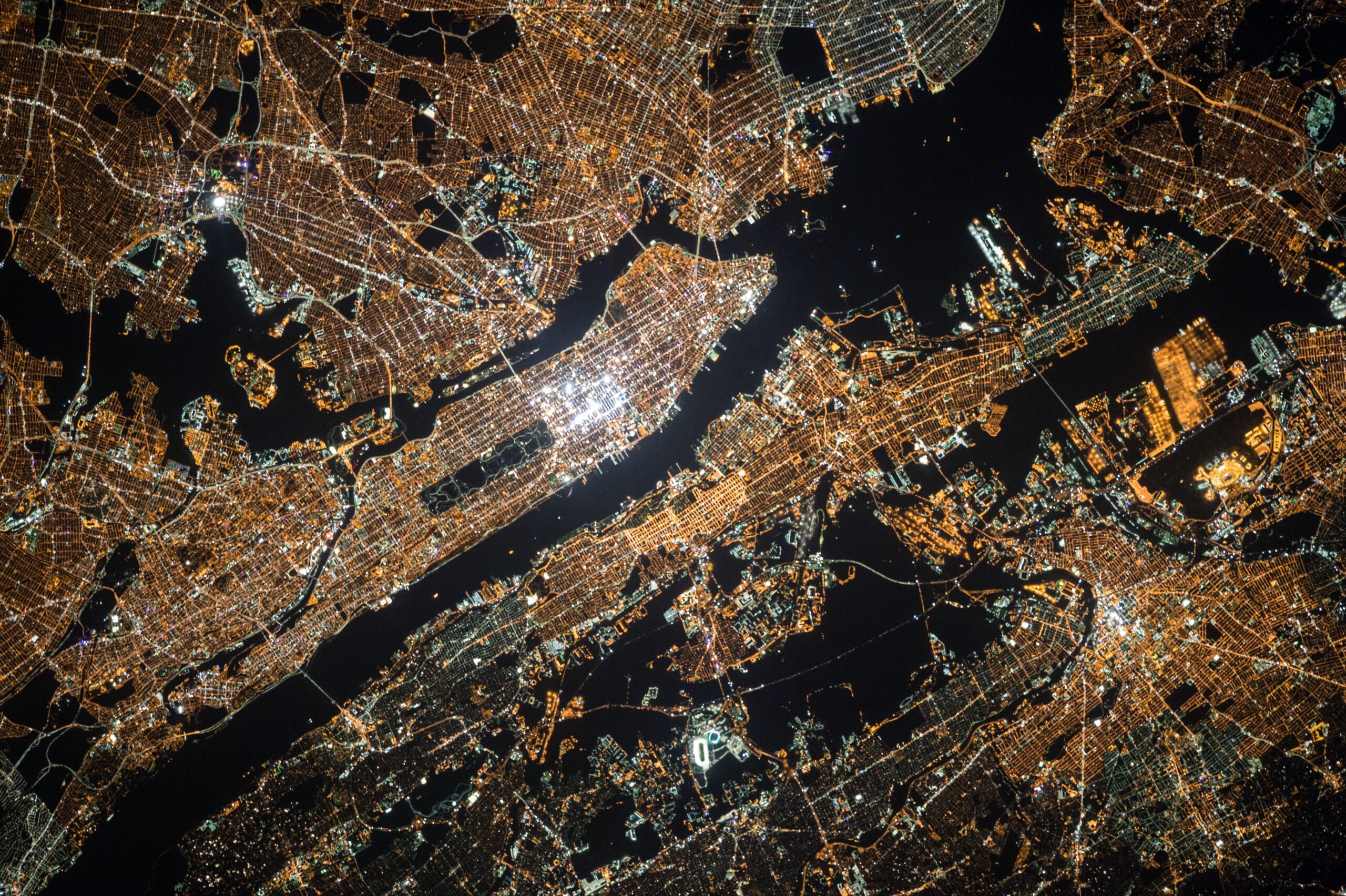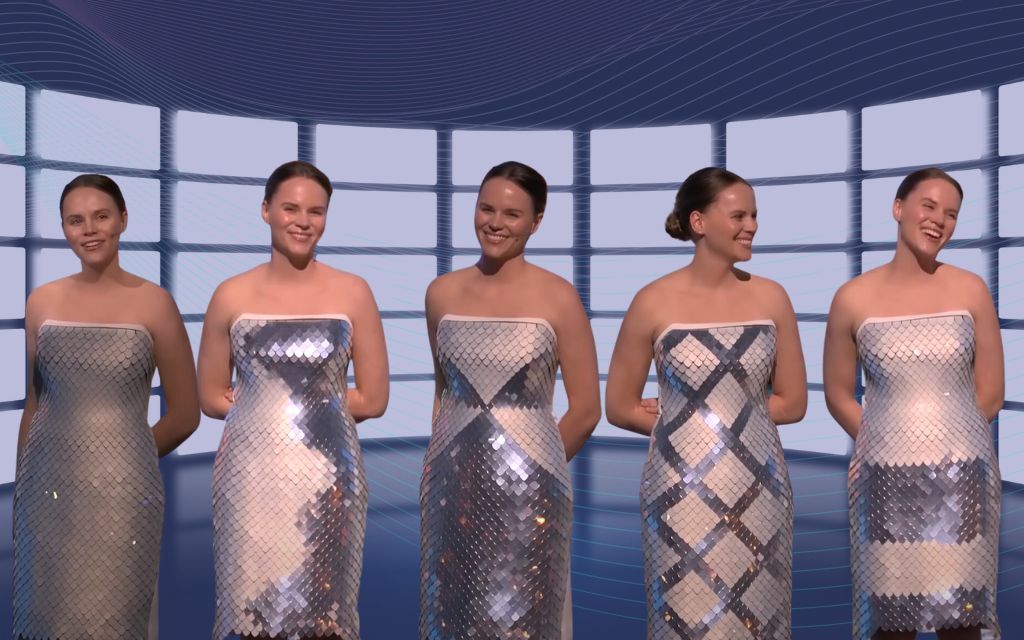
Global trends in experiential marketing right now are undergoing an undeniable shift. Namely AI, the blending of virtual and physical worlds, immersive holistic storytelling, gamification, community building and building genuine relationships between consumer and experience. But what does this look like for brands?
Whether they are taking part in immersive virtual encounters or mind-bending real-world interactions, relationship building is paramount for consumers. Especially given the evolving role of tech/ AI, consumers are expecting more from brand experiences, making it even more important for marketers to design immersive experiences that resonate emotionally.
For this reason, we’ve begun to look at the consumer experience as more of a two-way dynamic taking into account the blending of the physical and digital spaces, variously referred to as ‘phygital’, converged or blended. You’ve got to craft interactive dialogues that align with the growing consumer influence on brand dynamics and build lasting connections if you’re to appeal to an increasingly connected community and keep up with global trends.
Global Trends In Experiential Marketing
Converged – or phygital – experiences
Defined as a blended experience of the digital and analogue, according to Forbes, ‘the growing phygital experience is becoming a powerful force in delivering convenient and relevant experiences to customers’. As previously mentioned, people now expect this and thanks to the rapid acceleration of tech, hungrier consumers and brand voices getting louder this will only become more seamless. There’s no doubt that new tech is levelling up our experiences, as well as extending their reach. Not only meeting consumer behaviours and preferences, but exceeding them in unprecedented ways, enhancing the physical world.
Hyper-Personalization
Tailored experiences are set to continue as a global trend in experiential marketing in 2024, but with an added layer of depth. Brands will be able to use advanced AI to hyper-personalise interactions, making each touchpoint highly relevant and individualised.
Smart Home tech’s comeback is a great example of what AI promises will come: tech which provides a real time response to consumers preferences and offers them an “active participation in a phygital ecosystem” directly in the comfort of their own homes. What’s more personal and relationship building than something which starts inside the home, speaks to you, and remembers how long you like to boil your eggs for? You want your experiences to incarnate this.
By integrating tech with a human touch, AI has the chance to make a home within your personal environment. Consumers once existed separately to brand experiences but AI, with all its uncanny familiarity, has blurred this line in forming a relationship with us. Marketers have to adapt, and think more fluidly, by designing hyper-personalised experiences which place consumers in the middle of the activation. If you build a relationship between brand/activation and consumer which speaks to them directly, you’ll prompt more of a holistic conversation between the two camps. Without trying to sound too hippy about things.
This interactive dialogue is attractive to consumers, as envisioned by our Exchange Lever, which revolves around co-creation and actively encouraging consumer participation, ultimately inviting them to willingly enter into a new community that makes them feel connected to something greater than themselves.
Multi-Sensory engagement
Now more than ever before, experiences need to evoke emotions and leave a lasting impression.
Bombarded by a flurry of ever changing graphics and pixels which hypnotise us as we scroll through socials and our LinkedIn timelines, a rebellion against the digitalised overloading lies in that which we can smell, hear, touch and see. Our senses are what make us feel like humans again, experiential marketing must continue to excel at this, and consider going back to basics to engage consumers.
Linking to our MARVELS research, multi-sensory engagement is the single most effective way to ensure that your experiences are resonating with your consumer and allowing them to take home with them an experience that has no expiry date. You want your experience to live on in the hearts and minds of your consumers long past the end of your activation, like a mental postcard or emotional souvenir they can hold onto.
And this tactility is only evolving, as AI surpasses every expectation imagined or forecast in times before. Whilst we recognise we can’t shy away from it, we instead wish for a more human packaging of AI, and demand an increasingly responsive, humanised dynamic between audience and experience. If we cast a glance over to how AI is evolving the way the world of fashion is moving forward, like touch-ferns at the Eden Project which bedazzles school-trippers and their teachers alike, designers and creatives have taken a leaf (pardon the pun) out of nature’s book in envisaging this responsive tactility into their imagining of fashion’s future. We’ve seen designers incorporate this innovation in the Project Primrose AI-enhanced dresses unveiled by Adobe last year which feature a chain-mail or fish-scale reminiscent design, which is formed of their smart-textile and transforms the dress’ facade when touched. Here, Adobe uses physical experiences to really play to their strengths in leading with taste/scent and physical touch – which virtual and digital are still (for now) unable to compete with.

Interactive Storytelling and world building
Storyscaping
Whilst we’ve touched on ‘phygital’ brand experiences becoming the new normal, building brand universes which are interconnected and universally applicable across different realities in virtual and IRL spaces, is a highly effective way of shaping your consumer’s reception of your brand.
Storyscaping is about broadening the playing field for brands to bring their experiences to life. There’s an undeniable opportunity for brands to think about how they can augment their physical experiences by building virtual experiences which complement them. Equally, if you craft fully immersive virtual experiences, it’s arguable you can build more consistent storyscapes and bring this to life more convincingly than you can physical experience. Allowing for more liberty and freedom for brands to create something that is genuinely memorable, innovative, exciting and will stick in people’s minds. All with the added bonus that you can engage those who weren’t able to attend in person, which in turn extends the experience.
It’s important to think about this in a more holistic way, and account for the fact that your consumer is engaging with your brand across a multitude of different touch points. If each touchpoint offers your consumer a vastly different point of engagement, you risk it becoming a fractured experience which creates cognitive dissonance (whereby your consumer has an elevated, luxurious experience when they interact with your brand IRL and then in the digital, this experience is disappointing, mundane, and feels very prosaic in comparison to the luxe experience you’ve had in the live moment).
Brands need to be thinking about how they can avoid this fracture, by approaching this new playing field with a mindset of building converged realities. Brands need to ask themselves how they’re delivering consistency for their consumers in their experiences but also leaning into the strengths of those differences. If your brand is a highly tactile brand for example, of course it makes sense to drive people to experience your brand physically because it prioritises the sensory.
But maybe there are less tangible things that you can bring to life in a virtual world that tell the provenance story in a much richer way than you can in a physical space. In the IRL you might need your consumer to read a lot of material/information or watch video content which doesn’t coincide with that luxe environment. Think about the whole world that you want to build around your brand and then embrace the combination of experiences that allow you to tell that story in the most memorable, interesting and relevant way for your audience. Be intelligent about how you make the best of each of your touch points so it plays to the strengths of those realities.
Gamification in interactive playgrounds
Gamified brand experiences remain popular, and are arguably a baseline expectation when consumer touch points are becoming ever more digitised and Gen-Zified. Building worlds for your ‘players’ to dive into extends your audience’s interactivity and engagement with your brand, or in many cases, causes it in the first place.
Resisting the flatter digitised experiences of times past, virtual world experiences are really well set up for creating that gamified interaction. Brand experiences which build metaphorical, ‘phygital’ or indeed gamified cities filled with lore, secrets and levels to unlock, create realms within which your consumer finds a home. In this gamified realm, there’s an opportunity to hold someone’s attention in the way that they want to be engaged, with this interactivity offering up a far richer exchange between consumer and brand. Virtual experiences offer an interactive playground which allows you to dial up that gamification holding your consumers interest. The Roblox imagining of the Ryanair travel experience proves this to be true, whereby fans of the airline built a terminal on the platform and players can experience and indeed ‘play’ in their crafted world.
The Metaverse is the perfect playground for this virtual home-making, in how it allows us all to explore new worlds that have never existed before and even build them ourselves, marking a new form of entertainment.
Community Building
Brands have the opportunity to engage with passionate pre-existing fandoms and create experiences tailored to increasingly niche communities.
TikTok is a great place for these niche communities to find their tribe. Thanks to the platform, highly passionate fans now have the chance to embrace and co-create with one another, proving the extent to which brands aren’t always in control of forming their own narratives. The recent birth of ‘Gag City’, stands as testament to this: an AI-assisted imagining of Nicki Minaj’s kingdom, a virtual community built by her fans in response to the artist’s release of her latest album ‘Pink Friday 2’. Her fans took her album launch’s marketing efforts into their own hands and engaged with it in the way they so desired. Which stands as proof of how eager fans are to interact with whatever IP or fandom they feel attached to, and come together to build their own world around it. Brands have to celebrate these highly passionate communities in a richer way if they’re to meet these fans where they are.
This global trend marks an evolution from brand loyalty to genuine engagement and community expansion. Nike have caught onto this wave with their web3 initiative launched at the end of 2022 SWOOSH, which actively encourages co-creation within their online community. Offering an online space for creators to digitally design their own shoes, or jumpers within the virtual brand home. Nike tapped into the universally shared childhood joy of playing house, and now creators can replicate this on a much larger scale by crafting their own web3 collection. This not only incites play in your consumer but also taps into that childhood wonder we all seek.
As our Marvels research has proven, namely our Sociality lever, people want to feel a part of a tribe, and if you offer this to your consumer they’re more likely to want to immerse themselves within it and talk about it with their friends. If you reward them for interacting with your brand, it gives them a reason to return and to stay. In turn generating more interaction and participation from your brand. The more that somebody interacts with your brand through physically holding it or interacting with it in a virtual space, the more likely they will remember it, share and talk about it and potentially, ultimately, want to purchase it.
Conclusion
It’s increasingly apparent that consumers wish for a genuine ‘response’ from an experience. Whether that’s a digital experience which immerses them virtually or a physical experience which envelops them in revolutionary, innovative, arguably ‘homely’ ways, it circles back to a question of ‘rapport’. Experiential marketers must rethink the way we consider the experience-consumer relationship, or re-formulate it and start considering it as exactly that, a relationship, and that between consumer and increasingly blended worlds.
There’s certainly room that’s been made for a new wave of innovation, and here at We Are Collider we couldn’t be more excited.



